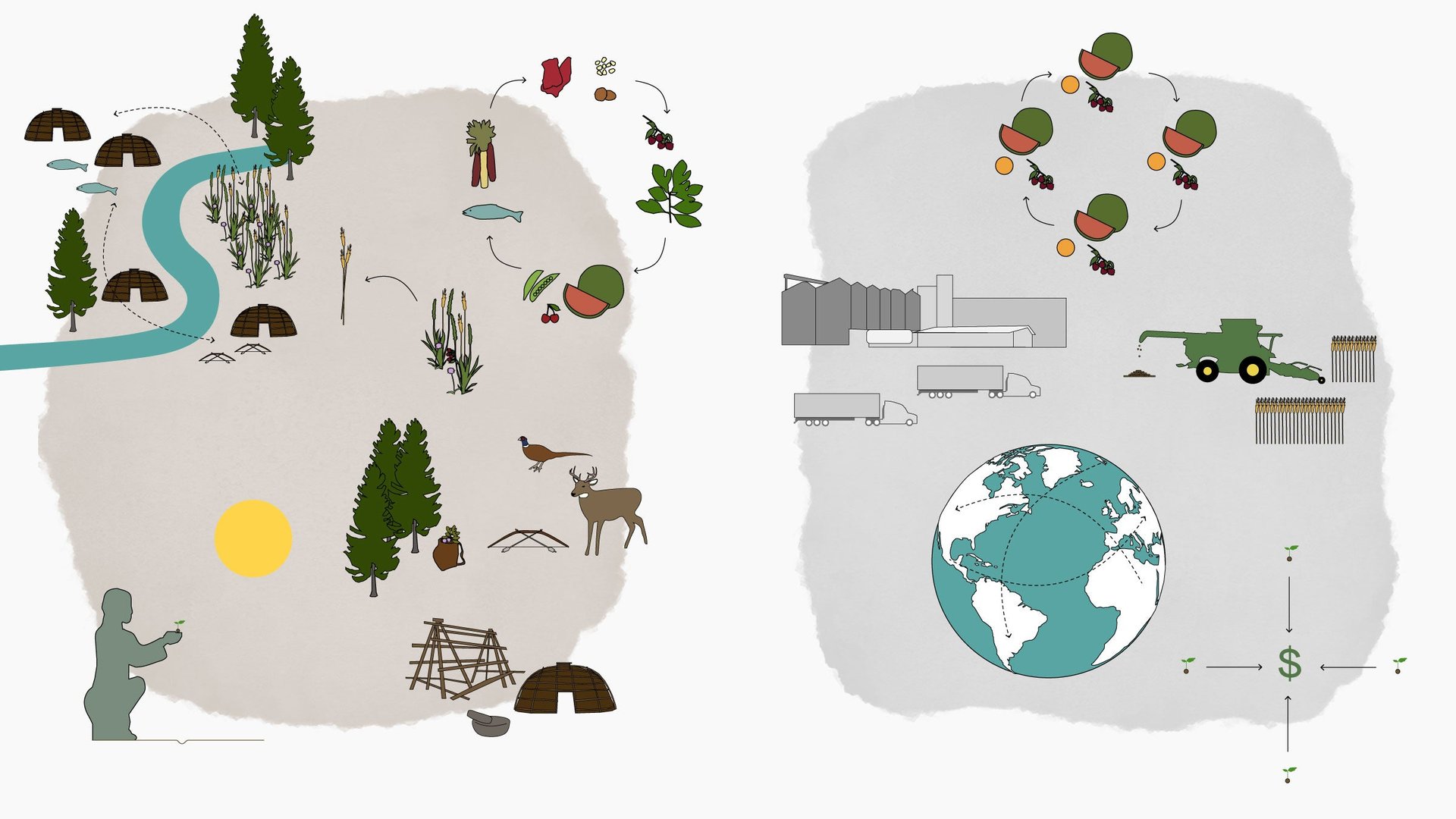Indigenous knowledge is central to making the global food system sustainable
Climate talks at the COP26 conference included attention on indigenous groups. “Indigenous peoples are at the center because they are the ones that are walking the walk,” said Yon Fernández de Larrinoa, head of the Indigenous Peoples’ unit at the UN. “They are living in communion and harmony with the environment, and that’s the only way to protect it in the long run.”


Climate talks at the COP26 conference included attention on indigenous groups. “Indigenous peoples are at the center because they are the ones that are walking the walk,” said Yon Fernández de Larrinoa, head of the Indigenous Peoples’ unit at the UN. “They are living in communion and harmony with the environment, and that’s the only way to protect it in the long run.”
As Americans celebrate Thanksgiving and its history of European settlers sharing food and learning from Native Americans, indigenous people in the US are reconnecting with their roots to relearn what their ancestors knew—especially with food supply vulnerabilities during the pandemic.
The early cooperation between the settlers and natives that Thanksgiving is based on was short-lived. Throughout US history, indigenous people have been stripped of their resources and left dependent on the government. “I was raised on food programs by the government, which was necessary,” said Sean Sherman who grew up in the Pine Ridge reservation of South Dakota. “But it’s also really detrimental because of the poor nutritional aspects: over-processed food, tons of carbs, lots of sugar, over salted foods…you look at communities that are surviving under a program like that and you have diabetes, obesity, heart disease…that’s all a direct result.” Sherman is known as The Sioux Chef and founded Indigenous Food Lab which seeks to connect entrepreneurs creating healthy indigenous foods.
Learning the know-how of indigenous systems and applying it to how we live in an industrialized world brings a very different way of generating and producing food than what consumers are used to and expect. Here are some ways that indigenous food systems differ from industrial ones.
What are indigenous food systems?
According to the Food and Agriculture Organization of the UN (FAO), these are the five things indigenous food systems have in common:
An intense understanding of nature and nature’s cycles.
A combining of food generation with food production.
Going distances to gather food, then preparing and consuming it in the same place.
Generation of food through territorial management.
The importance of spirituality.
What can industrial farmers learn from indigenous peoples’ farming techniques?
Can indigenous food systems produce the same amount of food as industrial systems to feed the world? “Absolutely…We could have food systems dotted around urban areas, utilizing both perennial and domesticated plant seeds,” said Sherman. “Think about how much one small farmers’ market farm can produce in one summer. We could be growing a ton of food, then it’s about understanding how to preserve it.”
The UN is in agreement that indigenous food systems can scale up.”If indigenous peoples had the same level of access to land and resources in finance that non-indigenous peoples have in agriculture, my hypothesis is that there would actually be greater production of food.” said Mikaila Way who leads FAO’s indigenous peoples’ unit in North America. Reclaiming land could allow indigenous food systems to be interconnected and seen through to their full potential.
Indigenous techniques that will make industrial farming more sustainable.
Eating strawberries or oranges all year round requires transporting them long distances across the planet and making a huge carbon footprint. Food the local environment provides seasonally doesn’t need to be transported as far. While there may be less of certain items they could taste better and perhaps have a higher seasonal demand.
Industry could also learn to focus more on food generation. Food generation is what nature grows without human intervention. Food production uses human intervention to produce food from nature. For example, the ocean providing fish is food generation, the act of fishing is food production. A focus on food production exacerbates the scarcity of resources, as overfishing has depleted fish populations around the world. Investing in regenerative approaches can include periodically not fishing in certain areas so that fish populations can grow, and replenishing soil so that native plants repopulate an area.
🎧 For more intel on food systems, listen to the Quartz Obsession podcast episode on fish sticks. Or subscribe via: Apple Podcasts | Spotify | Google | Stitcher.
The globe’s current food base is based on a few crops like wheat, rice, soy, and corn. Industry can work to diversify this set of foundational foods. “It is not only tremendously risky in terms of price shocks” said Fernández de Larrinoa, but also is a very limited choice of sustenance and unhealthy if not balanced with other foods. Fruits and vegetables that are nutritious are often neglected for monocrops. Processed foods like high-fructose corn syrup are not digested well by the human body and are associated with health problems. Industry could increase the variety of crops grown to offer other kinds of foods that are more nutritious.